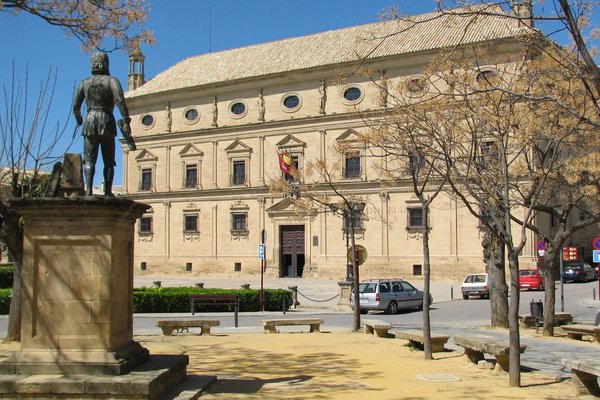Spain
Úbeda and Baeza
The Renaissance Monumental Ensembles of Úbeda and Baeza holds the best-preserved examples of Italian Renaissance architecture in Spain.
Both Andalusian towns developed a certain wealth in the 16th century and competed with each other in the design of Renaissance buildings. In Úbeda, the aristocratic families were the driving forces, while in Baeza the town council ordered fabulous public works. The Spanish architect Andrés de Vandelvira was responsible for the design of buildings in both towns; his ideas also spread to Latin America.
Community Perspective: There just are not that many Renaissance buildings in a country that is full of Gothic, Moorish and Baroque buildings, so for that reason they do stand out a bit. But neither of the towns will impress you much if you’ve been to Italy before.
Site Info
Official Information
- Full Name
- Renaissance Monumental Ensembles of Úbeda and Baeza (ID: 522)
- Country
- Spain
- Status
-
Inscribed 2003
Site history
History of Úbeda and Baeza
- 2003: Advisory Body overruled
- ICOMOS advised a deferral "subject to redefinition and verification of the nominated areas and buffer zones."
- 2003: Name change
- Upon inscription: from "Ubeda-Baeza: Urban duality, cultural unity" to "Renaissance Monumental Ensembles of Úbeda and Baeza"
- 2003: Inscribed
- Inscribed
- 2000: Requested by State Party to not be examined
- Prior to Bureau session. Nomination was not brought forward to regular session in the same year.
- 1989: Rejected
- Doesn't meet requirements
- Type
- Cultural
- Criteria
- ii
- iv
Links
- UNESCO
- whc.unesco.org
- Official
-
- ubedaybaezaturismo.com — Ubeda y Baeza Turismo
- Related
-
- andalucia.com — Link
All Links
UNESCO.org
- whc.unesco.org — whc.unesco.org/
Official Website
- ubedaybaezaturismo.com — Ubeda y Baeza Turismo
Related Resources
- andalucia.com — Link
Community Information
- Community Category
- Urban landscape: Post-medieval European
Travel Information
Recent Connections
-
Ten years or more to inscribe
1989-2003 -
Extensions on Tentative List
Jaén Cathedral -
Built in the 16th century
"The most important development takes p…
Connections of Úbeda and Baeza
- Trivia
-
-
Twin Towns
Ubeda & Baeza
-
- Architecture
-
-
Renaissance
-
Isabelline style
Jabalaquinto Palace (Baeza)
-
- World Heritage Process
-
-
Ten years or more to inscribe
1989-2003 -
Rejected, and then inscribed
-
Extensions on Tentative List
Jaén Cathedral
-
- Religion and Belief
-
-
Cathedrals
Sta Maria
-
- Constructions
-
-
Walled cities
Ubeda
-
- Timeline
-
-
Built in the 16th century
"The most important development takes place from the mid 15th to the 16th century.... The most important historic buildings in Ubeda include: The Palace of Francisco de los Cobos... (1531), The funerary chapel of El Salvador del Mundo ..(1532-53); The Palace of Vázquez de Molina (1546), The Hospital Honrados Viejos (1548). The Palace of the Déan Ortega (1550)" (AB)
-
- WHS Hotspots
News
No news.
Recent Visitors
Visitors of Úbeda and Baeza
- Adolfo
- Adrian
- Afshin Iranpour
- Alberto Rodriguez Gutierrez
- aleserre
- alex
- Alexander Barabanov
- Alexander Lehmann
- Alikander99
- Ammon Watkins
- Ana Lozano
- Anna Wludarska
- Antonio J.
- Argo
- Aspasia
- Astraftis
- Atila Ege
- AYB
- BaziFettehenne
- Bill Maurmann
- Bin
- Birgitte Sørensen
- Caspar
- CeeMon
- Christoph
- Christravelblog
- Claire Bradshaw
- Cluckily
- Clyde
- Corinne Vail
- Csaba Nováczky
- CugelVance
- Daniela Hohmann
- Daniel Chazad
- Dan Pettigrew
- dave wood
- David Aaronson
- David Berlanda
- Dimitar Krastev
- Dimitrios Polychronopoulos
- Dorejd
- Dr. Caligari
- Dwight Zehuan Xiao
- Elaine McArdle
- Elia Vettorato
- Els Slots
- Eva Kisgyorgy
- Evgenii
- Fan Yibo
- Farinelli
- Feldhase
- Femke Roos
- Filip Murlak
- Frederik Dawson
- FS
- Gary Arndt
- George Gdanski
- GeorgeIng61
- Harald T.
- Harry Mitsidis
- Hubert
- Iain Jackson
- Ivan Rucek
- Jacob Otten
- Jakob F.
- Janina Lehmann
- Janos
- Jarek Pokrzywnicki
- Jasam
- Javier
- Javier Coro
- Jean Lecaillon
- Jeanne OGrady
- Jezza
- Joel on the Road
- Jonas Hagung
- Jonas Kremer
- Jon Eshuijs
- KarenBMoore
- Ken DJ
- Klaus Freisinger
- Krzysztof B
- Lara Adler
- Lisu Marian
- Loic Pedras
- Luboang
- Luis Filipe Gaspar
- Lukasz Palczewski
- Maciej Gil
- Maciej Gowin
- Małgosia Łupicka
- marc Rouserez
- Martina Rúčková
- Matthewsharris
- MaYumin
- MH
- M. Huineman
- Mikan22
- Mikko
- MMM
- nan
- napalm
- Niall Sclater
- Nihal Ege
- Nolan B.
- Olli-Pekka Turunen
- opperpco3
- PabloNorte
- Patrik
- Patrik_globe
- Paul Schofield
- Peter Lööv
- Petteri
- Philipp Leu
- Philipp Peterer
- Porcho
- Randi Thomsen
- Reza
- rogerding
- Roger Ourset
- Roman Bruehwiler
- Sabrina Liebehentschel
- Samy G
- Schnitzel
- scubarrie
- SDMArado
- Shandos Cleaver
- sibariam
- Solivagant
- Stanislaw Warwas
- Stijn
- Svein Elias
- Szucs Tamas
- Tamara Ratz
- Taotao Chen
- Tarquinio_Superbo
- Thomas Buechler
- Thomas Harold Watson
- Thomas van der Walt
- Tim Allen
- Tom Flaten
- triath
- Vanessa Buechler
- Viaje al Patrimonio
- Vincent Cheung
- voyager
- Wimmy
- Wojciech Fedoruk
- Wo_ko
- Xiong Wei
- Xiquinho Silva
- Zoë Sheng
Community Reviews
Show full reviews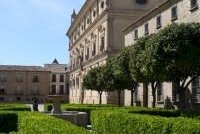
March 2017 - after visiting Granada we drove along the Sierra Nevada and turned north to the two Renaissance Towns. Ubeda we visited for lunch tapas and Baeza for the night. Ubeda is quite nice and definitely authentic in its Renaissance appearance. We were lucky since the weather was just perfect. We wandered a bit around and took some photos, finally we had nice tapas. Then we drove further to Baeza, where we found a hotel in an old prison. We managed to visit also this town and eventually at evening we went to a Sports bar, with only locals around. With every "Dos Cañas per favor", we got free Tapas, and they were big and delicious. A truly authentic experience. The best part about this visit.
Keep reading 0 comments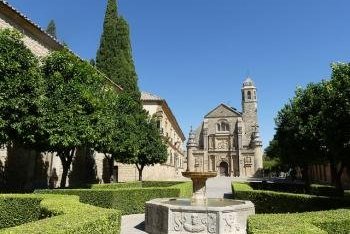
I visited this WHS in September 2017. I allowed 2 half days for both towns and spent a night in Baeza.
Ubeda is the better ensemble of the pair with more interesting Renaissance buildings and more to see. Baeza is mostly famous for its neatly carved fountains and the still active old university with a facade which reminded me of the Lonja de la Seda in Valencia.
You won't gain much in terms of OUV (if there is any) by visiting the church and palace interiors. However, if you have some time, I'd recommend going for the El Salvador Holy Chapel which is closed during siesta time. The highlight of my visit was the facade and square of the El Salvador Holy Chapel (photo). The church facade in a way is quite similar to the one in Vezelay, France. The UNESCO inscription plaque (with no mention of Baeza) is placed on the right hand side (closest to the fountain) of the Vazquez de Molina Palace.
In the middle of the historic centre of Baeza there is a bronze sign on the floor just after a pedestrian crossing but it is hardly recognisable. Both towns are very close to each other and both historic centres can be easily covered on foot. In Ubeda, I used the convenient indoor parking named Aparcamientos Ubeda in Plaza Andalucia while in Baeza I just parked my rental car in front of the hotel.
Both towns are quite similar to Pienza in Italy but are still …
Keep reading 0 comments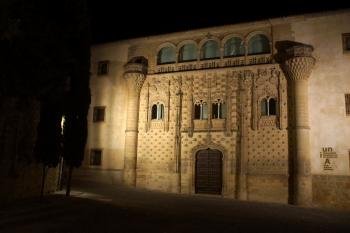
The Andalusian twin towns of Úbeda and Baeza in the province of Jaén are considered the best examples of Renaissance style in Spain. However, these two small towns cannot compete with the major centres of Renaissance in Italy, and I would not rank them among the best Spanish WHS, but nevertheless we enjoyed our visit. In both towns, the inscribed area is rather small, just a historic square and a few cobblestone streets. There are no outstanding buildings, the charm is more in the harmony of the architectural ensemble. And that it is calm and sleepy, there are not many tourists, a pleasant change to other sites in Andalusia like Granada or Cordoba.
Coming from Granada by rental car, we first made a detour to the Jaén Cathedral, a possible extension that was withdrawn in 2014 after an unfavourable evaluation by ICOMOS. Well, it's a huge cathedral, quite nice, but it would not add much to the already inscribed parts.
In Úbeda, the inscribed area is a bit off the modern town centre, it consists essentially of the buildings and monuments around the Vázquez Molina Square: Basilica Santa María, Sacra Capilla El Salvador del Mundo, Vázquez de Molina Palace (the town hall), the Palace of the Déan Ortega (today a Parador), the Pósito (former granary, currently the police station). Both churches can be visited with an audioguide, the town hall is accessible during office hours and the Parador has a nice courtyard where we took a coffee break.
… Keep reading 0 comments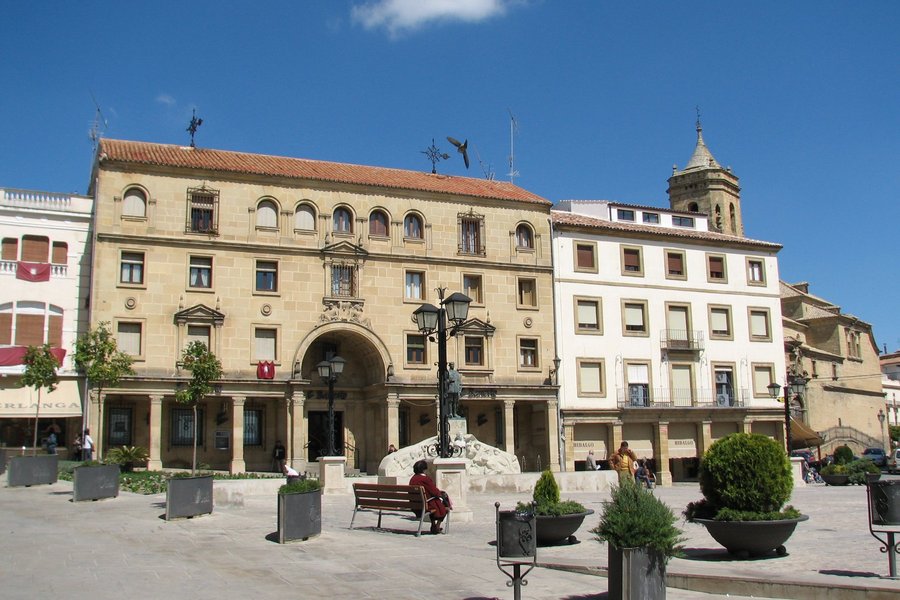
These 2 small towns in Andalusia are reputed to offer Spain's finest Renaissance architecture. Their WH inscription may be justified because of the influence they had on Latin American architecture, and because there are not that many Renaissance buildings in a country that is full of Gothic, Moorish and Baroque buildings. In Baeza, I visited the cathedral and walked some of the well-preserved old town streets. In nearby Úbeda, most important sights are grouped around the Vázquez Molina Square. The most impressive for me was the Salvador Chapel, which features a really brilliant interior and altarpiece. All in all, I was not overly impressed with either town, although to be fair, it was pouring heavily and was very cold, which added a somewhat gloomy atmosphere. Also, being stuck between Córdoba and Granada, it is obviously hard for these towns to compete with either place, which are really world-class attractions. I also visited the massive cathedral in nearby Jaén, which could be added to the site in the near future. It was quite impressive and should make a useful addition.
Keep reading 0 comments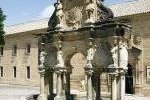
The main features of these two towns is that they are easily toured on foot, and there are frequent buses connecting them together, and to Linares-Baeza station.
In Baeza I visited the cathedral and the monumental buildings and fountains in the Plaza del Populo and the Plaza de la Constitucion.
In Ubeda I visited several palaces, the churches of Santa Maria and the Saviour of the World as well as the archbishop's prison, and these were just a sample of what was on offer.
Keep reading 0 comments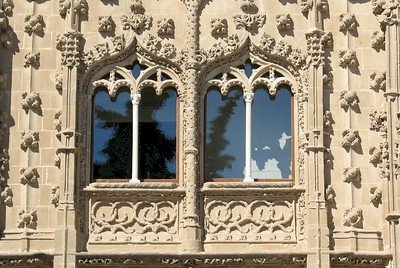
A lot of thinking has gone into the acceptance of these two towns on the World Heritage List. The site was deferred twice, and not many beneficial terms could be found to recommend it: the historic city centres aren't special enough on the Spanish scale, the Renaissance areas are no match for those in Italy, the concept of 'twin towns' doesn't appeal to ICOMOS and the restorations lack quality. The final decision made by the World Heritage Committee applauds the introduction of Renaissance ideas to Spain.
Úbeda and Baeza are well signposted from the highway near Jaen. Both towns are very proud of their long-sought-after status as 'Patrimonio Mundial', and have various colourful roadside signs pointing that out. I started my visit in Baeza, an atmospheric little town despite the fume-blowing factories in its outskirts. The Renaissance monuments are scattered around the city center, amidst many more recent buildings.
Úbeda is much bigger and sees a lot more traffic than its counterpart. It took some time before I could find the famous Vázquez de Molina Square. Many of the palaces here are designed by Andrés de Vandelvira, whose statue also is located in this square. Many of the buildings are now in use for official purposes or as a parador.
Although Úbeda and Baeza are worth a short visit, I would rank them at the bottom end of the World Heritage list. The best part of the day was the drive there from Granada, passing endless olive …
Keep reading 0 comments
Ubeda and Baeza are two of the most gorgeous cities I have ever been too. We spent hours just wandering the streets and trying to cram in a visit to every historic building open to the public.
What was best was that it wasn't full of tacky touristy-ness, we were two of only about 5 English speakers that we saw all day. Hooray.
All the staff in the museums/churches etc were very polite and helpful and patient enough to listen to my beginner level Spanish.
Just watch out for little old ladies who will be your best friend and offer to show you their houses - in an attempt to make you buy their wares or give them a few Euros for their troubles...
Keep reading 0 comments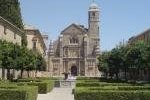
Both of these twin towns have interesting historic background so before visiting them it is helpful to learn a bit about them.
We visited this site in very hot summer day in 2007. As a warning please don't do the same mistake as we did. As during siesta the towns are completely empty, everything is closed and there are no people you can chat or ask. In later ours this is comming to improve so you slightly change your mind from "very boring" to "interesting".
Ubeda is the bigger town containing many of religious builings and palaces from Renaissance period. They act together in harmony. The most interesting place is Sacred chapel of the Savior of the world placed near the main square. In size small but inside is very nicely decorated.
Baeza is a smaller sister which i liked more - mainly because our evenings visit.
If you are travelling around visit this site, otherwise it is nothing really special why to travel here.
Pic: Sacred chapel from main square
Keep reading 0 comments
